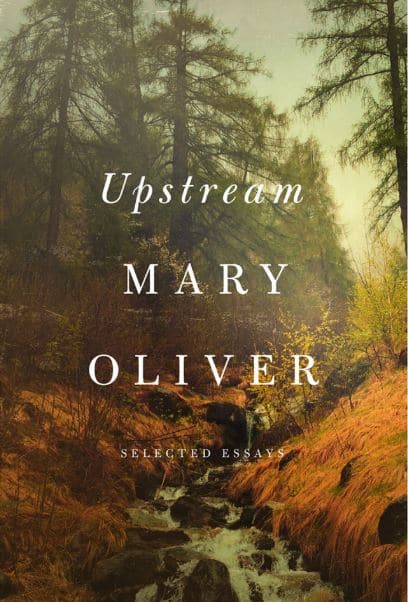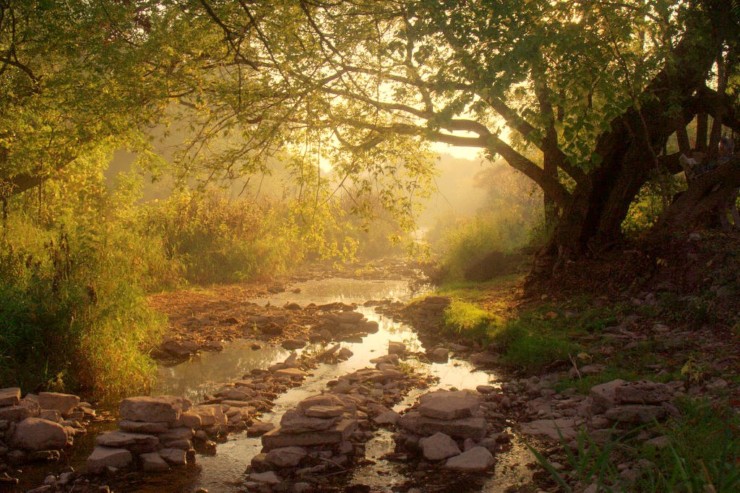What does it mean to read like a writer? I have always been an avid reader, and I have always discovered new things from books I read, but during graduate school my reading practice shifted. As part of my MFA program, I read 60 books and wrote a three-to-four-page paper on each one. In the process, I figured out a formula that worked for me: find something the author does well in the text, provide specific examples, and figure out how to apply it to my own writing.
So, this is how I read like a writer—I give attention to how a book was written and try to incorporate those techniques in my own work. I’ve learned about effective metaphors from Mary Karr, hospitable spiritual writing from Frederick Buechner, and repetition and other poetic devices from Lia Purpura.

Present tense allows us to pretend that action and thought are immediate and concomitant. … But I like my present tenses full of the past, if possible. Not as a flashback, mind you—I like my present tenses to acknowledge that the person in the present tense did not come into existence in this moment, and that a whole world of time exists behind them and props them up, even if it is never directly mentioned.
I love this take on the use of the present tense, that it should be full of the past, full of the sense that there is a world and time from before propping up the present. Mary Oliver’s essays in Upstream contain many beautiful, detailed, present-tense observations that would please Julavits because they hint at a significant past. These scenes root readers to the places Oliver describes as well as to her larger themes and narratives—those taking place in the now and those from before now.
At the end of “The Ponds” Oliver writes,
It is summer now, the geese have grown, the reeds are a bearded green flocculence, full of splinters and light. Across the pond, the purple loosestrife (alien here, but what does that mean—it is recklessly gorgeous) has come into bloom. A fox steps from the woods, its shoulders are bright, its narrow chest is as white as milk. The wild eyes stare at the geese. Daintily, it walks to the pond’s edge, calmly it drinks. Then the quick head lifts and turns, with a snap, and once again the geese are appraised. Perhaps it looks toward me too. But I am utterly quiet, and half-hidden. (48)
Oliver’s inclusion of the word “now” helps us hold space for what came before the summer. We are reminded of prior seasons, of spring, winter, autumn. Months are contained within that one word. Her confession that she is quiet and half-hidden hints at a past, too. She is quiet and half-hidden from the fox right now, but her quietness and hiddenness point to the alternative that has surely occurred before now: that she has been loud and seen.
I imagine the place Oliver has painted with a pond and reeds and blooms and geese and a fox. And I see Oliver, silent and still, trying to not disturb the natural course of life around her. But she is a member of this natural course of life, too—she’s an observer, a documenter, a storyteller, and to her readers (and possibly to the fox), she’s observed. Because of the way Oliver uses the present tense in this scene, I want to know more about her. I want to know where she’s been, and I want to know what this specific spot was like before the now she writes of. I want to know if there’s something from her past she’s hiding from.
My questions and curiosities as I read and ponder become a mirror. I don’t know the answers Oliver might provide, and this makes me turn these questions toward myself. Where have I been before now? What was my current place like in the past? What might I be hiding from?
Oliver’s “Winter Hours” has a similar effect. She writes,
The house is hard cold. Winter walks up and down the town swinging its censer, but no smoke or sweetness comes from it, only the sour, metallic frankness of salt and snow. I dress in the dark and hurry out. The sleepy dogs walk with me a few strides, then they disappear. The water slaps crisply upon the cold-firmed sand. I listen intently, as though it is a language the ocean is speaking. There are no stars, nor a moon.
Her observation that there are no stars, nor a moon, contains a parallel observation that alludes to the presence of stars and a moon at some time in the past. Where there is now darkness, there once was light. Again, Oliver uses the present tense in a way that gives us clues to her past. This technique adds another meaningful layer to the present, a layer that leaves us contemplating our own presents in light of our pasts.
In both of these examples, and in many more throughout Upstream, Oliver is curious about her world and reveals it with gorgeous language, keen metaphors, and creative personification. She is present in each of these scenes, too. She is quiet and hidden in the first and she is dressing and walking outside in the second. She places herself in these natural settings in the present and invites us to join her in these moments while considering what might have come before. We read her words and become fellow travelers with her, walking on our present paths without losing sense of where we’ve been, from where we’ve come.
When we write in the present tense, we can keep company with Oliver. Instead of placing the now in a box all wrapped up with a pristine bow, we can free the now and let it linger with the past, with a history that has brought us to where we are.
Try It
What change have you experienced or noticed recently in a specific setting? Write a first-person scene in the past tense including plenty of sensory details about the setting and the change you experienced or noticed. Then re-write the same scene in the first person in the present tense as if you are experiencing this setting for the first time. Include a hint to the past that informs the present.
Photo by Joel Bedford, Creative Commons license via Flickr. Post by Charlotte Donlon.
____________________

“I require all our incoming poetry students—in the MFA I direct—to buy and read this book.”
—Jeanetta Calhoun Mish
- Read Like a Writer: Second Person Narrative Voice in Claudia Rankine’s “Citizen: An American Lyric” - December 5, 2018
- Read Like a Writer: C.E. Morgan’s Personification Technique in “All the Living” - October 17, 2018
- Read Like a Writer: Mary Oliver’s “Upstream” - September 5, 2018

Sandra Heska King says
I’m going to love this series.
I like reading the present tense. It reminds me of that old You Are There series where the viewer is time-warped to the past, and the past comes alive. I read Mary’s pieces above in the past tense, and they don’t physically stir me like reading them in the present. I feel like I’m right there living that slice of time with her.
Charlotte Donlon says
I did the same after reading your comment and I agree! I like it in present tense.
Will Willingham says
I do love this approach, reading a writer with an eye toward ferreting out what it is about their writing that takes it in a certain direction.
And this idea of immediacy created by present tense helps me understand why intuitively I will sometimes want to write a piece that way.
Charlotte Donlon says
Yes. I always wonder if my favorite writers knew intuitively what a piece needed from the start. I’d love to know if Oliver wrote the essays referenced above in present tense the first time around. My guess is she did. 🙂
Megan Willome says
Reading this makes me realize I have often worked to incorporate the past into present-tense writing, usually in essays (columns). I don’t think I knew why, only that it felt right, until reading this. Thanks, Charlotte!
Charlotte Donlon says
I’m glad you were able to gain some insight into your writing process! Thanks for reading!
Dave Malone says
I heartily enjoy (<–yes, yes) this post. Wonderful. 🙂